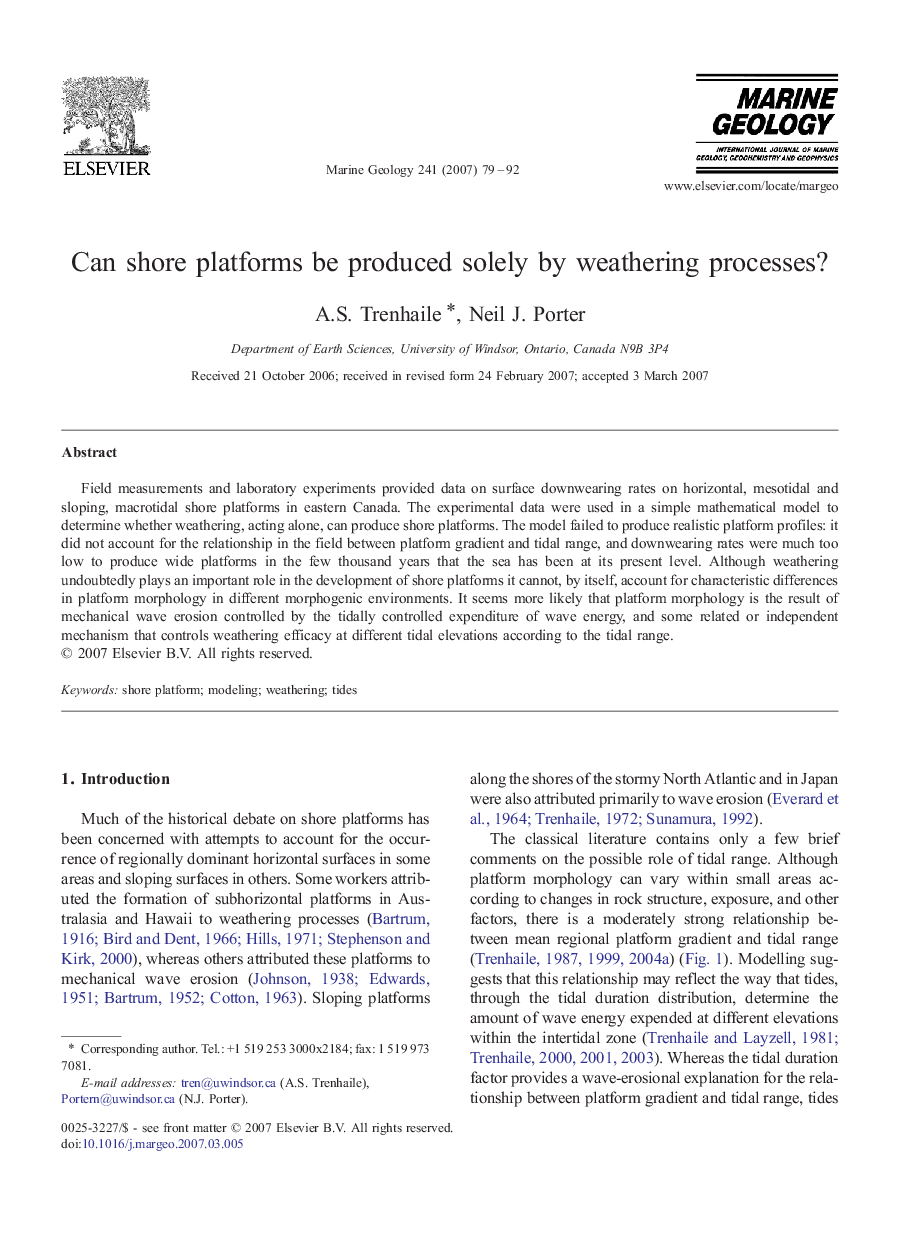| Article ID | Journal | Published Year | Pages | File Type |
|---|---|---|---|---|
| 4719650 | Marine Geology | 2007 | 14 Pages |
Field measurements and laboratory experiments provided data on surface downwearing rates on horizontal, mesotidal and sloping, macrotidal shore platforms in eastern Canada. The experimental data were used in a simple mathematical model to determine whether weathering, acting alone, can produce shore platforms. The model failed to produce realistic platform profiles: it did not account for the relationship in the field between platform gradient and tidal range, and downwearing rates were much too low to produce wide platforms in the few thousand years that the sea has been at its present level. Although weathering undoubtedly plays an important role in the development of shore platforms it cannot, by itself, account for characteristic differences in platform morphology in different morphogenic environments. It seems more likely that platform morphology is the result of mechanical wave erosion controlled by the tidally controlled expenditure of wave energy, and some related or independent mechanism that controls weathering efficacy at different tidal elevations according to the tidal range.
